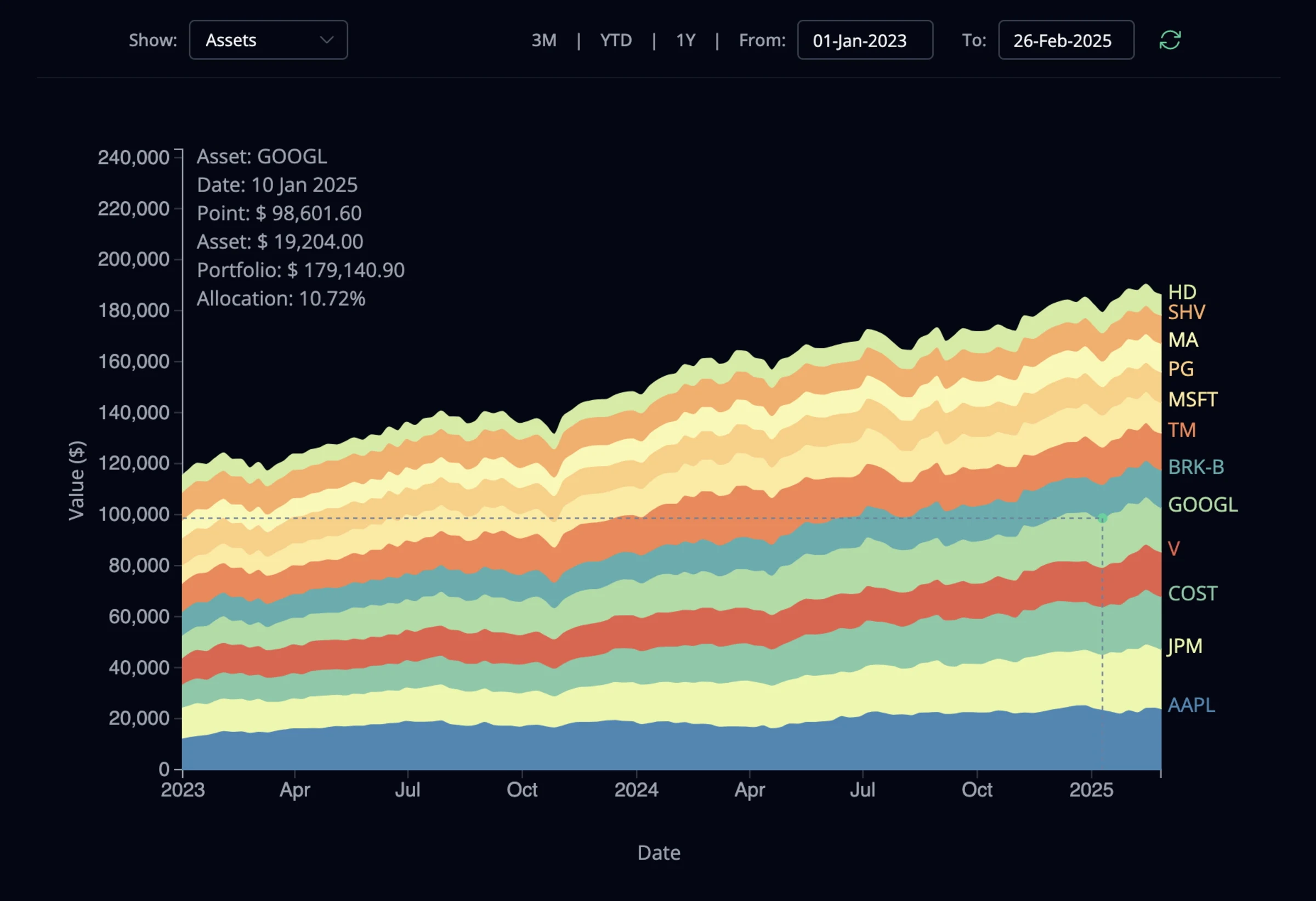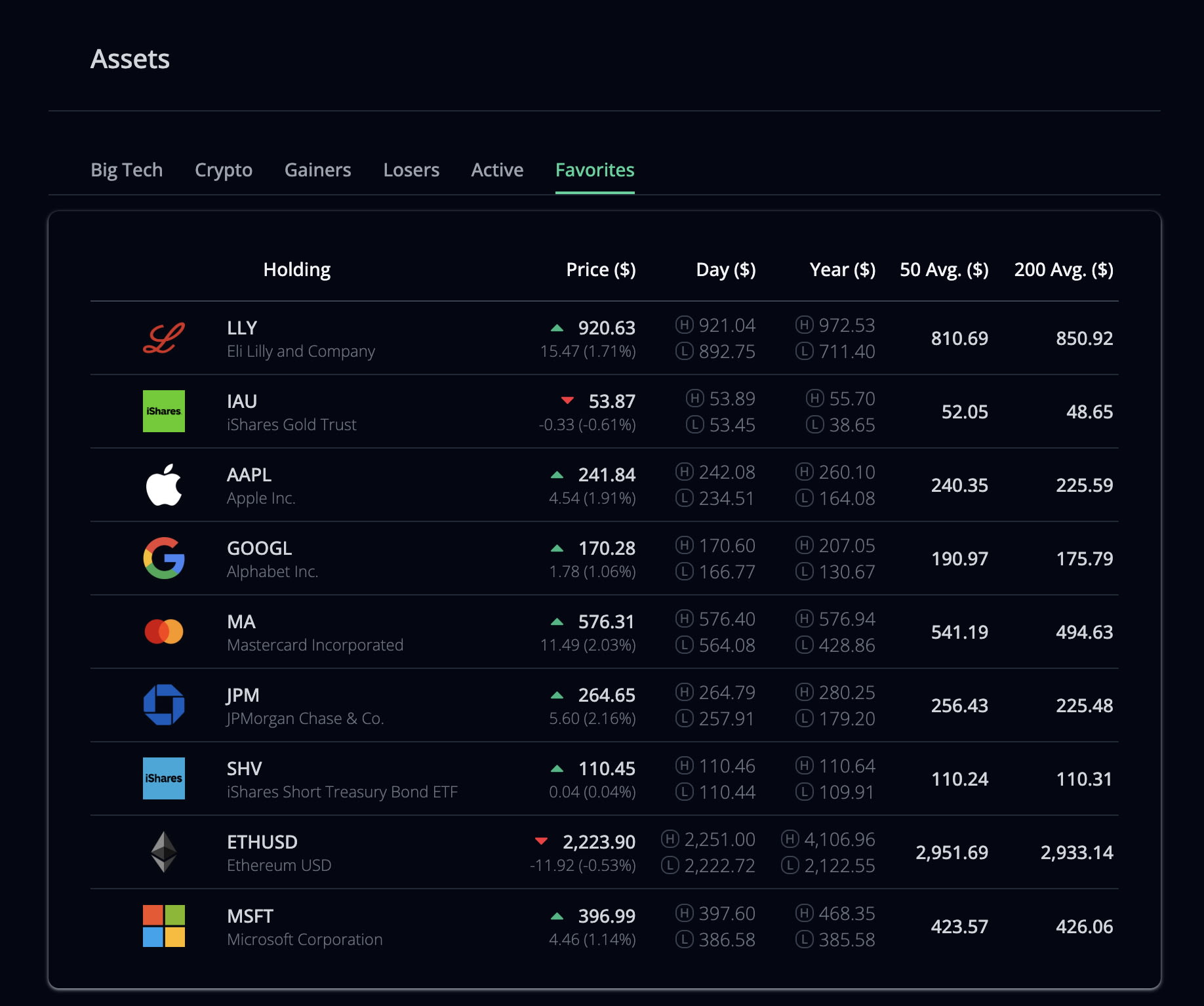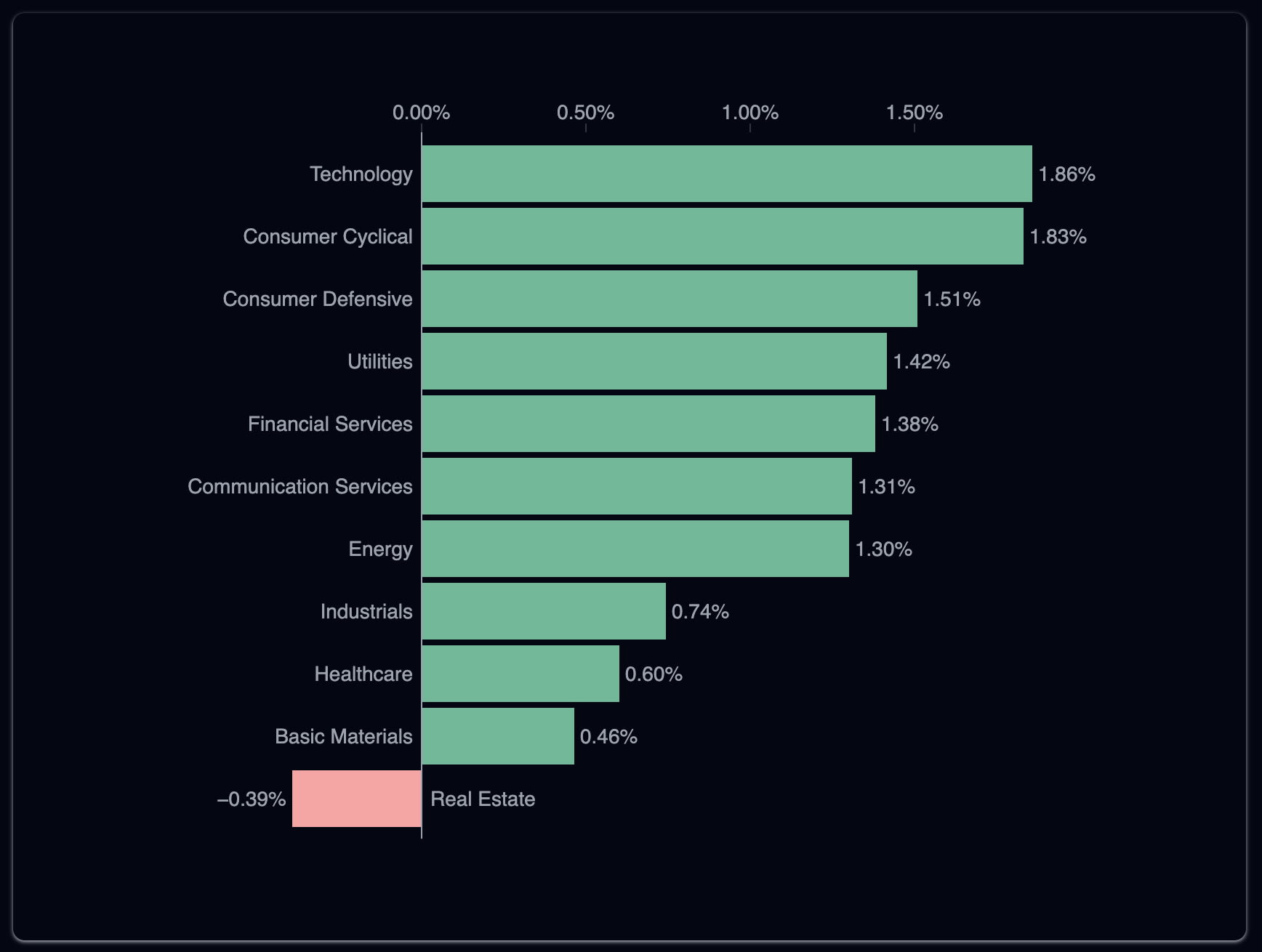Manage Your Investments Like A Pro
Gain confidence with powerful analytics and insightful visualizations in your journey to create wealth.
Financial freedom in your hands

Turn Uncertainty Into Clarity
We help you answer the big investing questions, so you can manage your portfolio with ease

Powerful Portfolio Analytics
Smarter Investing + Better Outcomes
Easily track performance, manage risk, and optimize your portfolio, so you can invest with confidence and stay on target.
Track your portfolio's value in and see how your investments are performing at a glance.

Market & Asset Insights
Make Data-Driven Decisions
Gain a deeper understanding of market trends and asset performance.

Favorites
Stay on Top of Your Favorite Assets
Easily monitor your favorite stocks, ETFs, Crypto and other investments in one place.

Fundamentals
Uncover Financial Health
Access income statements, balance sheets, and cash flow reports for deeper insights.

Performance
Detailed Analytics
Understand current performance, as well as expected returns and risk of any asset.

Stats
Key Metrics at a Glance
Instant access to essential asset stats, from market performance to valuation and statement ratios.

Markets
Track Sector Trends
Stay up to date on market stats and sectors trends to identify opportunities.

Ready To Take Control Of Your Investments?
Your smarter investing journey starts now.
Pricing
Clear, Simple Pricing. No Surprises
Choose from our transparent plans and get the insights you need to take control of your financial future.
Starter
Get started with all the essential portfolio management tools for free.
$0/month
Get started- Asset analytics
- Portfolio analytics
- Manual Trade Entry
- 3Y Historical Data
Premium
Most popular
Unlock advanced analytics and improve your productivity.
$9/month
Get started- All Starter features
- Account Sync (Coming soon)
- Limited AI Insights (Coming soon)
- 5Y Historical Data
Professional
Maximize your investment flow with pro-level features.
$19/month
Get started- All Premium features
- Unlimited AI Insights (Coming soon)
- Auto Rebalancing (Coming soon)
- 10Y Historical Data
Your Investments.
Your Future. Your Move.
Gain the insights and tools to invest wisely and grow your wealth.